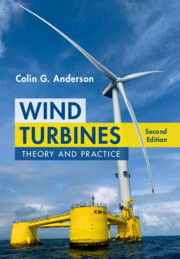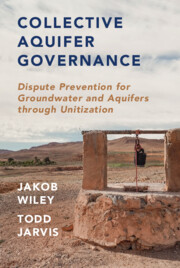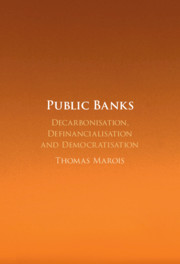Refine search
Actions for selected content:
26 results
Longitudinal changes in income are associated with the healthiness and sustainability of foods purchased in Mexican households
-
- Journal:
- Public Health Nutrition / Volume 28 / Issue 1 / 2025
- Published online by Cambridge University Press:
- 17 July 2025, e126
-
- Article
-
- You have access
- Open access
- HTML
- Export citation
1 - Economics and the Environment
- from Part I - Introduction and Key Concepts
-
- Book:
- Economics for a Sustainable World
- Published online:
- 14 July 2025
- Print publication:
- 12 June 2025, pp 3-31
-
- Chapter
- Export citation

Wind Turbines
- Theory and Practice
-
- Published online:
- 24 January 2025
- Print publication:
- 19 December 2024
-
- Textbook
- Export citation
Equitable access to sustainable healthcare services for children with autism
-
- Journal:
- BJPsych International / Volume 22 / Issue 1 / February 2025
- Published online by Cambridge University Press:
- 26 November 2024, pp. 11-14
- Print publication:
- February 2025
-
- Article
-
- You have access
- Open access
- HTML
- Export citation
Ceramics Properties of Indurated-Shale Quarry Wastes from Abakaliki, Southeastern Nigeria: Application as Raw Materials in Roofing-Tile Production
-
- Journal:
- Clays and Clay Minerals / Volume 71 / Issue 2 / April 2023
- Published online by Cambridge University Press:
- 01 January 2024, pp. 143-165
-
- Article
- Export citation
16 - International Development and Public Health
- from Part 2 - Contexts for Public Health Practice
-
-
- Book:
- Essential Public Health
- Published online:
- 01 December 2023
- Print publication:
- 14 December 2023, pp 303-322
-
- Chapter
- Export citation
The impact of sustainable aviation fuels on aircraft fuel line ice formation and pump performance
-
- Journal:
- The Aeronautical Journal / Volume 127 / Issue 1314 / August 2023
- Published online by Cambridge University Press:
- 21 February 2023, pp. 1287-1307
-
- Article
-
- You have access
- Open access
- HTML
- Export citation
12 - Sustainable Finance for the Transformation of Food Systems
-
-
- Book:
- Transforming Food Systems Under Climate Change through Innovation
- Published online:
- 19 January 2023
- Print publication:
- 19 January 2023, pp 130-143
-
- Chapter
-
- You have access
- Open access
- HTML
- Export citation
10 - Technology and Human Alienation from Nature
-
- Book:
- Human Prehistory
- Published online:
- 20 August 2022
- Print publication:
- 18 August 2022, pp 163-172
-
- Chapter
- Export citation
Sustainable food production through integrated rice-fish farming in India: a brief review
-
- Journal:
- Renewable Agriculture and Food Systems / Volume 37 / Issue 5 / October 2022
- Published online by Cambridge University Press:
- 28 April 2022, pp. 527-535
-
- Article
-
- You have access
- Open access
- HTML
- Export citation
5 - Determination and Redetermination
-
- Book:
- Collective Aquifer Governance
- Published online:
- 20 January 2022
- Print publication:
- 03 February 2022, pp 65-79
-
- Chapter
- Export citation
9 - Application to an Aquifer System
-
- Book:
- Collective Aquifer Governance
- Published online:
- 20 January 2022
- Print publication:
- 03 February 2022, pp 120-133
-
- Chapter
- Export citation

Collective Aquifer Governance
- Dispute Prevention for Groundwater and Aquifers through Unitization
-
- Published online:
- 20 January 2022
- Print publication:
- 03 February 2022
Seaweed and microalgae as major actors of blue biotechnology to achieve plant stimulation and pest and pathogen biocontrol – a review of the latest advances and future prospects
-
- Journal:
- The Journal of Agricultural Science / Volume 159 / Issue 7-8 / September 2021
- Published online by Cambridge University Press:
- 09 December 2021, pp. 523-534
-
- Article
-
- You have access
- HTML
- Export citation

Public Banks
- Decarbonisation, Definancialisation and Democratisation
-
- Published online:
- 21 May 2021
- Print publication:
- 10 June 2021
10 - Conclusion: Key Recommendations of this Book
-
- Book:
- Food or War
- Published online:
- 23 August 2019
- Print publication:
- 03 October 2019, pp 279-279
-
- Chapter
- Export citation
Comparison of Conventional and Alternative Nursery Weed Management Strategies
-
- Journal:
- Weed Technology / Volume 9 / Issue 4 / December 1995
- Published online by Cambridge University Press:
- 12 June 2017, pp. 761-767
-
- Article
- Export citation
Sustainability and Stewardship of Glyphosate and Glyphosate-Resistant Crops
-
- Journal:
- Weed Technology / Volume 21 / Issue 2 / June 2007
- Published online by Cambridge University Press:
- 20 January 2017, pp. 347-354
-
- Article
- Export citation
Valuations of ‘Sustainably Produced’ Labels on Beef, Tomato, and Apple Products
-
- Journal:
- Agricultural and Resource Economics Review / Volume 38 / Issue 3 / December 2009
- Published online by Cambridge University Press:
- 15 September 2016, pp. 371-383
-
- Article
- Export citation
Applying the food multimix concept for sustainable and nutritious diets
-
- Journal:
- Proceedings of the Nutrition Society / Volume 74 / Issue 4 / November 2015
- Published online by Cambridge University Press:
- 11 August 2015, pp. 505-516
-
- Article
-
- You have access
- HTML
- Export citation
